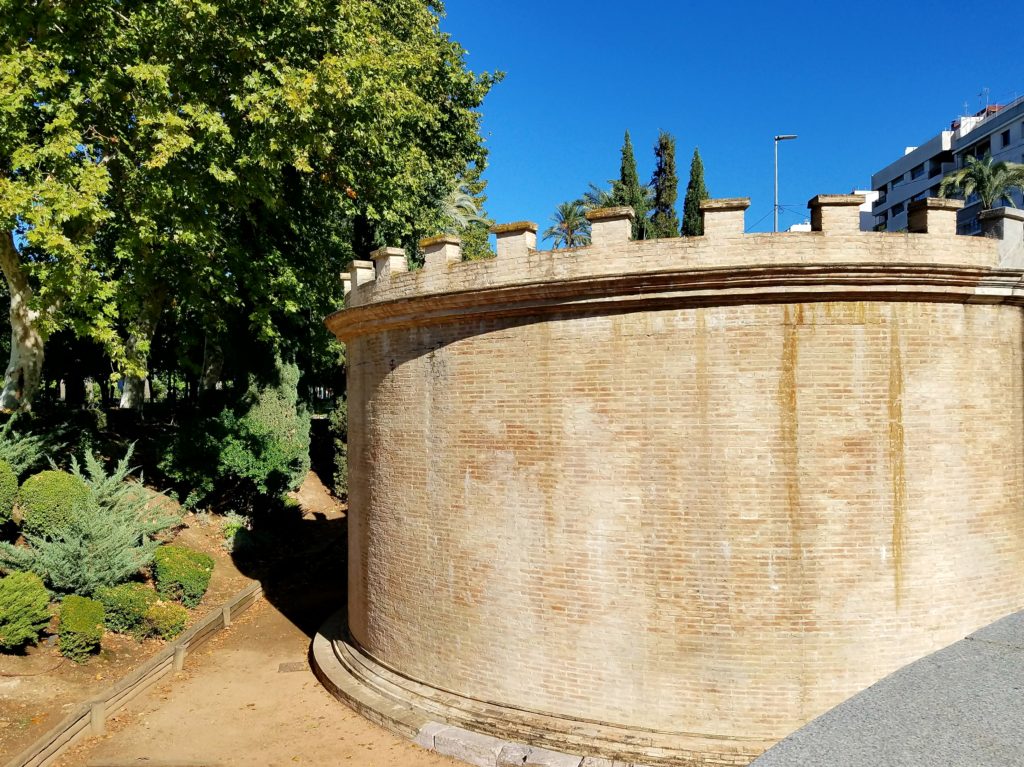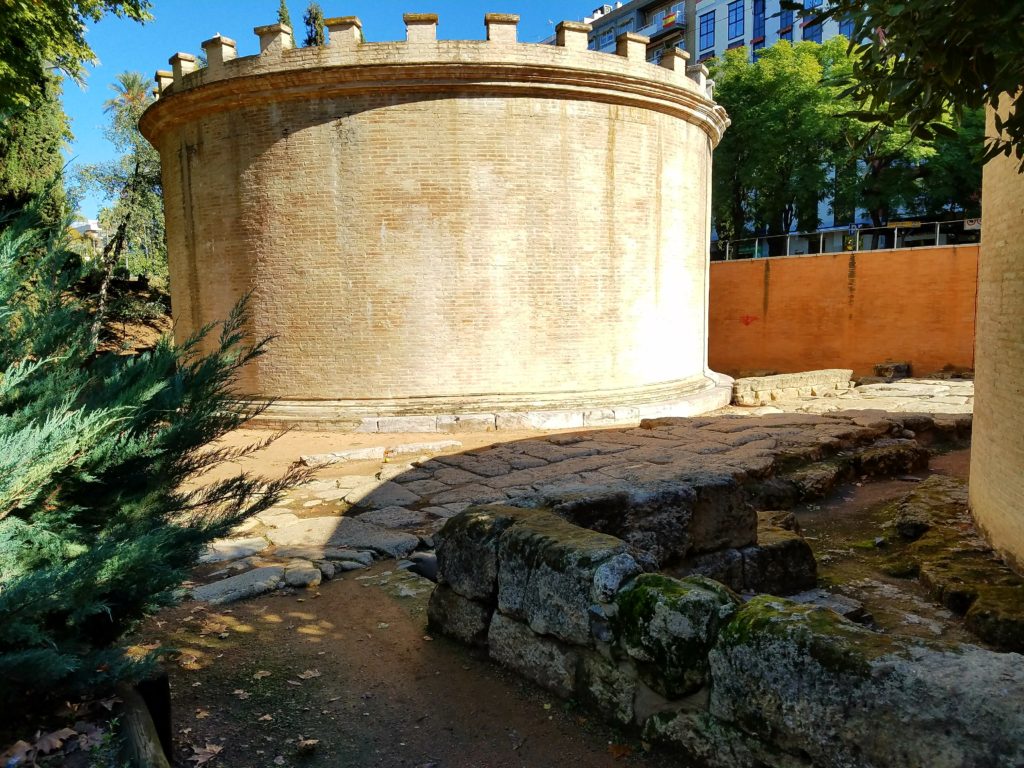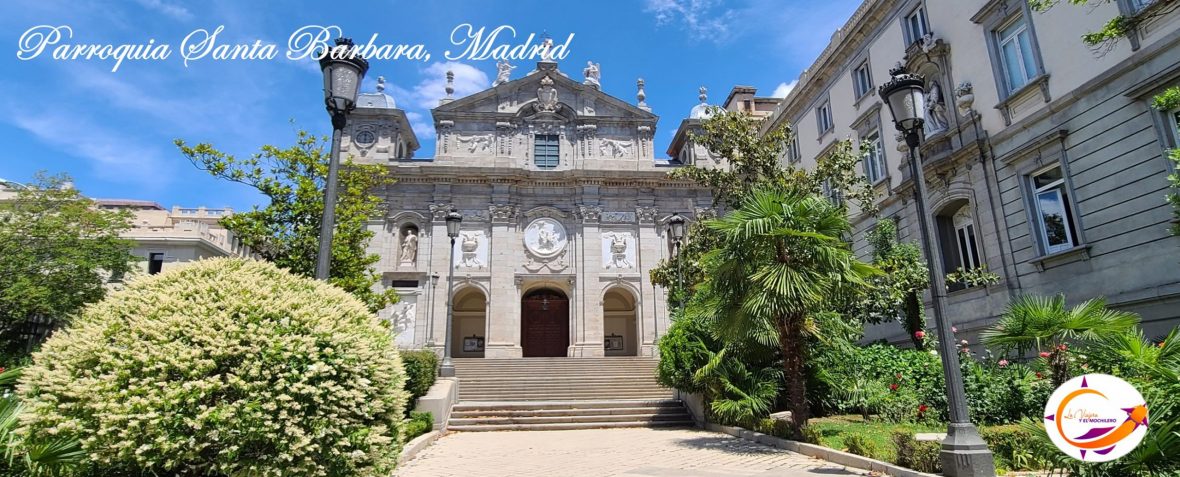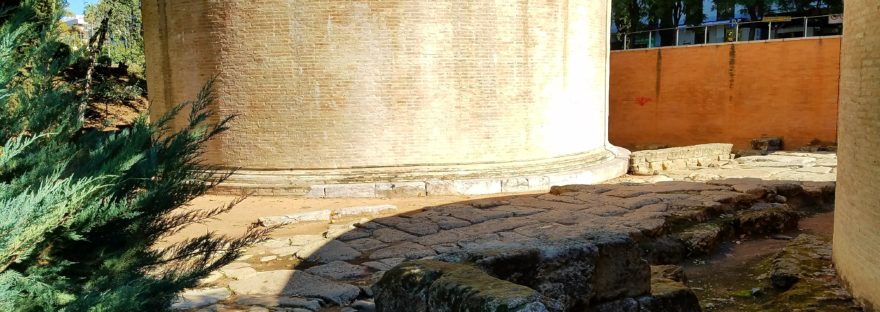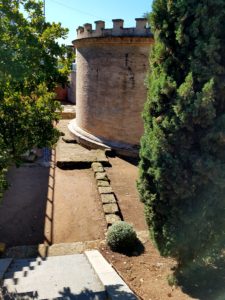 As we strolled through Córdoba, we unexpectedly encountered a large circular or cylindrical structure which turned out to be part of the Roman Mausoleums of Córdoba, a pleasant surprise. In researching the same, we discovered that this was of the most important funeral structures of the city built by the Romans and that they date back to the I Century. We observed that the same had be completely re-built and the burial hall containing Ash Urns as well as remains of its base, cornice and banisters . The Center for the Interpretation of the Funeral World is found therein and can be visited by appointment.
As we strolled through Córdoba, we unexpectedly encountered a large circular or cylindrical structure which turned out to be part of the Roman Mausoleums of Córdoba, a pleasant surprise. In researching the same, we discovered that this was of the most important funeral structures of the city built by the Romans and that they date back to the I Century. We observed that the same had be completely re-built and the burial hall containing Ash Urns as well as remains of its base, cornice and banisters . The Center for the Interpretation of the Funeral World is found therein and can be visited by appointment.
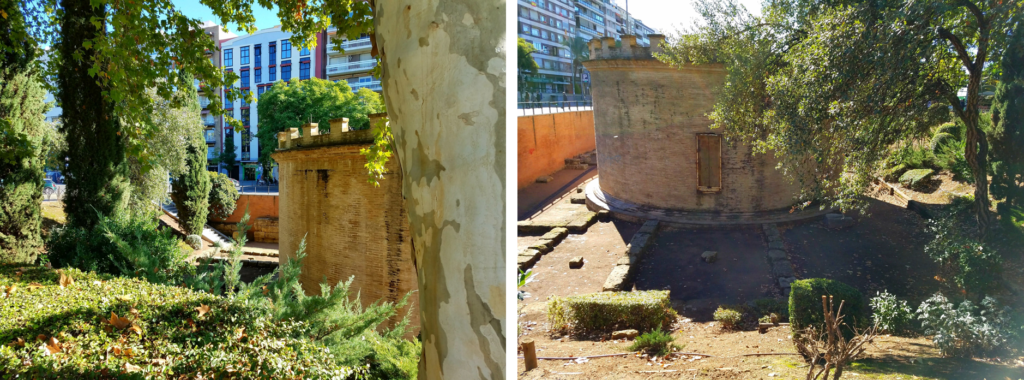
Given its location on the main road of Corduba-Híspalis, one can only conclude that it was built for a rich or important family at that time. Roman Law dictated that such burial structures had to be constructed on the city’s outskirts alongside the main roads. The burial sites were determined according to a family’s status; therefore, the closer to the city they were, the more relevant was the family.
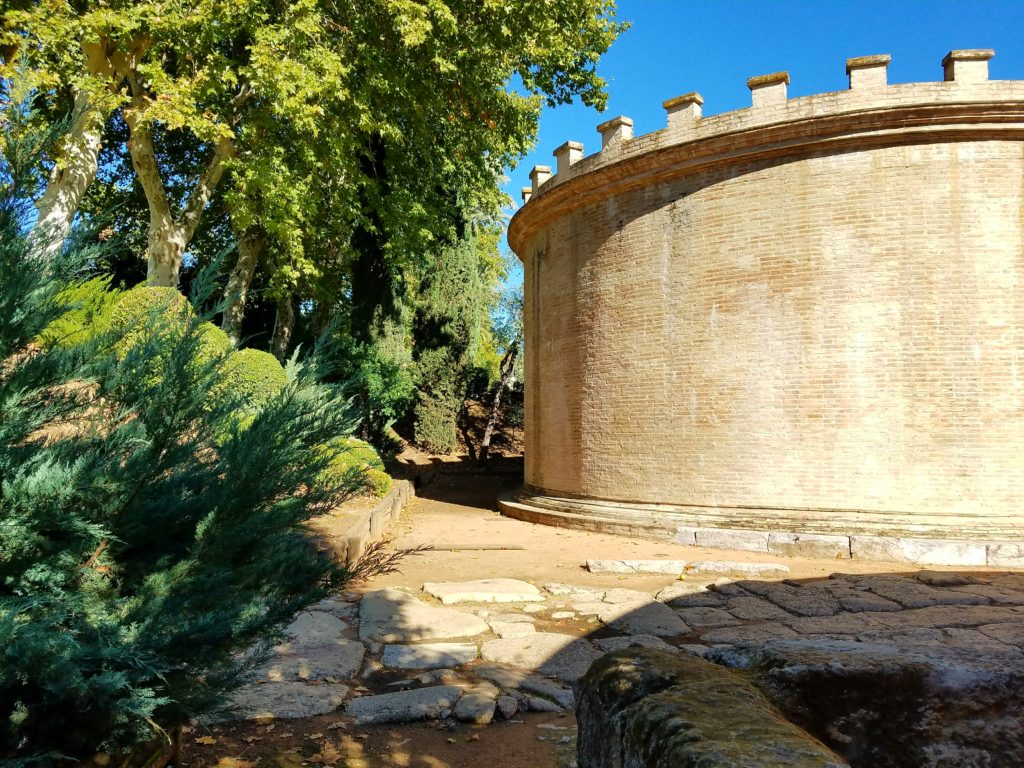
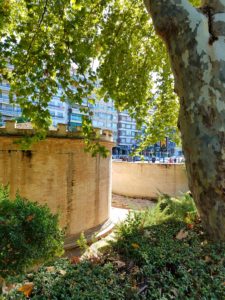 It is most probable that an Italian Architect is responsible for this designed, based on other mausoleums which had been built in Rome. It was built using sandy limestone (a type of bedrock) which is formed with rough sand and the erosion of coral reefs.
It is most probable that an Italian Architect is responsible for this designed, based on other mausoleums which had been built in Rome. It was built using sandy limestone (a type of bedrock) which is formed with rough sand and the erosion of coral reefs.
As has happened at other locations visited, this mausoleum was uncovered during an archaeological excavation at a proposed parking lot site. This happened in 1993 and given the importance of the discovery, the remains were conserved and the rest of the structure restored in line with the original form. However, since different materials were used, the linkages with the original remains are clearly evident.
Unfortunately, the second cylindrical structure unearthed was in such a stated of deterioration, that its restoration was impossible. In its stead, an semi-circular outline of the same was made using granite slabs in the paved walkway of “la Victoria” with the remaining portion of the circle completed with a viewpoint over the site.